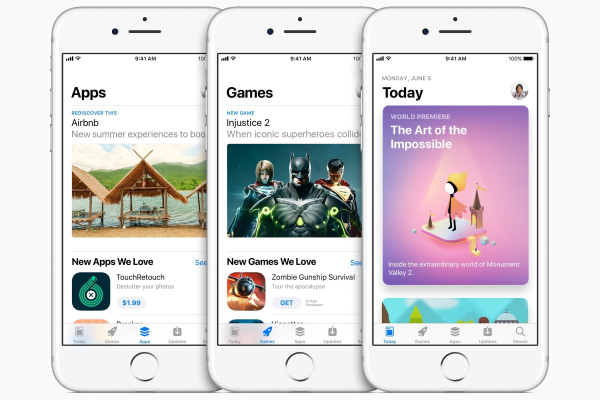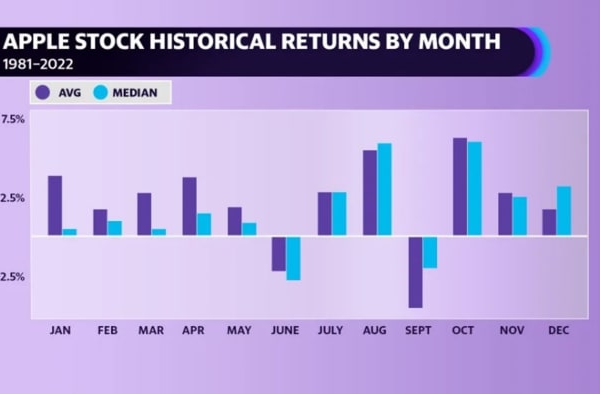iPad 3G Launch: The Revolutionary Tablet Revolution

The launch of the iPad 3G on April 30, 2010, marked a significant milestone in Apple tablet history, following the success of the first-generation iPad. Just weeks after the initial iPad release, eager consumers in the U.S. were thrilled to get their hands on the Wi-Fi + 3G iPad, which offered unparalleled connectivity with AT&T as its exclusive carrier. This innovative device arrived in the same sleek packaging as its predecessor but boasted enhanced features that set a new standard for mobile computing. Apple CEO Steve Jobs had ignited excitement for this next-generation tablet just three months prior during the iPad launch date, and the anticipation had clearly paid off. As the iPad 3G hit the retail shelves, it quickly began to drive iPad sales success, solidifying Apple’s foothold in a market that was ripe for disruption.
In late April 2010, tech enthusiasts welcomed the Wi-Fi + 3G variant of Apple’s groundbreaking tablet, which followed the earlier release of its first iteration. The anticipation build-up surrounding this model was palpable, as it promised to bring internet access to users on-the-go, something that appealed to both casual users and professionals alike. This update signified an important phase in the evolution of mobile devices, enhancing the user experience through cellular capabilities. As the market observed the rapid distribution of these devices, analysts noted that the tablet revolution was officially in full swing. The excitement surrounding the iPad 3G launch not only highlighted its appeal but also paved the way for future advancements in tablet technology.
The Impact of the iPad 3G Launch on Apple Sales
The launch of the iPad 3G on April 30, 2010, marked a significant milestone in Apple’s product lineup and played a crucial role in boosting iPad sales success. Apple’s decision to release a cellular-enabled version of the iPad followed the tremendous excitement generated by the first-generation iPad, introduced earlier that year. Within less than a month, Apple achieved a remarkable feat by selling 1 million units of the iPad, showcasing the incredible demand for the tablet. This success can be attributed not only to innovative marketing strategies but also to having a unique product that stood out in a market that had previously seen minimal competition for tablets. The iPad 3G’s launch solidified Apple’s position as a leader in the tech industry, paving the way for future iterations of both the iPad series and the broader tablet market as a whole.
Additionally, the iPad 3G’s ability to connect seamlessly via cellular networks offered customers more flexibility than its Wi-Fi-only counterpart. This feature addressed the growing need for mobile internet access, promoting a shift in consumer habits towards using tablets for a wider variety of tasks, including email, social media, and web browsing on the go. As more people recognized the advantages of having a powerful tablet at their fingertips, Apple redefined productivity and entertainment on portable devices. The partnership with AT&T, initially the iPad’s sole carrier, further facilitated the widespread adoption of the Wi-Fi + 3G model, enhancing Apple’s brand loyalty and continuing the momentum started with the first-generation iPad.
The Evolution of Apple Tablet History
The history of Apple tablets is intrinsically linked to the iPad and its various iterations, which began with the original model released on January 27, 2010. Following the iPad launch date, the ensuing excitement culminated in the introduction of the iPad 3G model just a few months later. This progression not only demonstrated Apple’s commitment to enhancing user experience but also reflected the company’s visionary approach to computing—a blend of innovation, ease of use, and cutting-edge technology. The iPad’s success inspired competitors to enter the tablet market, accelerating the evolution of mobile computing and diversifying the ecosystem with numerous options for consumers.
Apple’s journey through the tablet landscape has since witnessed numerous updates and feature expansions, making the iPad an iconic device in modern technology. As applications evolved and the app ecosystem grew, these innovations led to greater functionality within the iOS platform, attracting both casual users and professionals alike. This ever-expanding versatility of the iPad—fueled in part by the excitement around the Wi-Fi + 3G iPad—contributed significantly to the device becoming a staple in education, business, and personal use. Apple’s continual refinement of its tablet offerings stands testament to its core philosophy of innovation, setting the standard for future tablets in a competitive marketplace.
A Look Back at the First-Generation iPad
The first-generation iPad launched in January 2010 generated considerable buzz and anticipation. It was a groundbreaking device that set the stage for what a tablet could offer. Boasting a 9.7-inch multitouch display and powered by a 1GHz Apple A4 chip, users were quick to embrace the sleek design and performance capabilities. Despite not having a camera, the original iPad succeeded by providing an intuitive interface and a suite of applications that catered to a wide array of users, from casual readers to serious productivity seekers.
With the iPad 3G’s subsequent launch, the capabilities of the iPad were expanded significantly. Early adopters of the Wi-Fi + 3G model enjoyed the price of mobility alongside the vast functionalities that Apple had built into its operating system. This focus on user experience and accessibility paved the way for remarkable iPad sales success as it evolved into a household name. Consumers were not merely buying a tablet; they were investing in a new lifestyle supported by an expansive ecosystem of apps, enhancing the tablet’s appeal and solidifying its place in Apple tablet history.
Model Variants: Wi-Fi and Wi-Fi + 3G iPads
The differentiation between the Wi-Fi only and Wi-Fi + 3G models of the iPad was crucial in tapping into diverse consumer needs. The iPad 3G model was designed for users who required uninterrupted internet access regardless of their location. This version came preloaded with micro-SIM cards from AT&T, which allowed users to connect to the internet on the go—a game-changer for professionals and individuals who required constant connectivity. This strategic move emphasized Apple’s understanding of varying consumer demands, thereby driving sales across both models.
Conversely, the Wi-Fi-only variant catered to users who primarily utilized their devices at home or work, where Wi-Fi connectivity was accessible. This segmentation enabled Apple to reach a wide customer base, appealing to both tech-savvy individuals and casual users. The dual offering mechanism exemplified Apple’s marketing prowess and allowed the company to capitalize on the tablet’s sales potential by ensuring everyone had a model that suited their lifestyle. The success of both variants illustrated how critical consumer insights are in product development and marketing strategies.
Customer Experience and Initial Reactions to the iPad
When the iPad 3G launched, customer reactions were overwhelmingly positive. Many users praised the seamless integration of the device into their daily lives, with its lightweight design and responsive multitouch display transforming the way they consumed media and engaged with applications. The mobility afforded by the Wi-Fi + 3G option meant that users could enjoy streaming services, download new apps, and browse the web from virtually anywhere, fostering a sense of connection that was previously hard to achieve with traditional laptops or portable devices.
Additionally, the iPad brought about a revolution in the way content was accessed and consumed, challenging conventional norms of reading, gaming, and internet browsing. Early adopters were quick to share their initial thoughts, typically highlighting the device’s intuitive user interface and the broad selection of available applications. Many users saw the iPad 3G as more than just a gadget; it represented a new frontier in technology, where convenience and connectivity aligned to meet the demands of modern life.
Technological Advancements in the iPad Series
The introduction of the iPad set off a cascade of technological advancements within Apple’s product line, with the iPad 3G serving as a vital cornerstone in this journey. By leveraging a powerful Apple A4 chip and outstanding multitouch capabilities, the first-generation iPad laid the groundwork for future iterations that would come to incorporate more advanced technologies, including enhanced display features and powerful processors. Each successive model sought to improve on its predecessor, highlighting Apple’s relentless pursuit of excellence.
These innovations were not solely about hardware upgrades; they also included optimized software experiences that transformed how applications were designed and utilized. As the iOS platform continued to evolve, users gained access to increasingly sophisticated applications tailored specifically for the tablet experience. This commitment to continual improvement positioned the iPad series as leaders in the tablet market, showcasing a perfect blend of functionality, style, and performance that redefined user expectations.
The Wi-Fi + 3G iPad and Its Significance
The Wi-Fi + 3G iPad represented a significant technological and marketing achievement for Apple. Not only did it cater to users seeking mobility, but it also emphasized Apple’s strategic partnerships with telecom providers like AT&T, which enabled consumers to enjoy cellular data plans designed specifically for tablets. This integration into the mobile network ecosystem underpinned the device’s appeal, ensuring that customers found it easy to stay connected no matter where they were.
Moreover, the release of the Wi-Fi + 3G model played a pivotal role in redefining consumer expectations for what tablets could offer. Users began to see the potential for tablets to serve as essential tools for productivity, education, and entertainment. This shift in perception encouraged a broader acceptance of mobile devices as pivotal to daily life, thus cementing the iPad’s role in not only Apple’s success story but also the overall narrative of technology and communication in the 21st century.
Consumer Takeaways from the iPad 3G Experience
Reflecting on the overall consumer experience with the iPad 3G, it becomes evident that many users embraced the device’s innovative design and functionality. Users reported finding the sleek and lightweight structure to be more portable than traditional laptops, greatly enhancing the enjoyment of multimedia consumption and web browsing. Additionally, the introduction of features such as built-in apps for emailing and video conferencing positioned the iPad as a versatile tool suitable for both leisure and work.
The immediate success of the iPad 3G served as an important lesson for Apple in responding to customer demands for mobility and innovation. It offered insights into how tablets could not only fit into personal lifestyles but also reshape the ways in which people interact with technology. This understanding has driven Apple to continually innovate, as illustrated by the improvements and new functionalities introduced in subsequent models, ensuring that the lessons learned from the iPad 3G’s launch resonate throughout the company’s ongoing efforts.
What’s Next for Apple Tablets?
Following the iPad 3G’s success, Apple faced the challenge of maintaining its leading position in the tablet market. The momentum established by the original iPad and subsequent models led to questions about how they would continue to evolve and set trends in the technology space. Apple was aware that consumer expectations would only heighten with each new launch, and the company has continuously focused on integrating new technologies such as improved camera systems, better processors, and more sophisticated software solutions.
Anticipating the future of Apple tablets invites speculation regarding potential innovations that could redefine the user experience. With the rise of augmented reality and artificial intelligence, there are numerous possibilities for how tablets may integrate these technologies to enhance interactivity and functionality. As Apple continues to develop its iPad lineup, the legacy of the iPad 3G will undoubtedly influence their strategic direction, reminding the company of the importance of consumer feedback, technological advancements, and continuously pushing boundaries.
Frequently Asked Questions
What was the launch date of the iPad 3G?
The iPad 3G was launched on April 30, 2010, almost a month after the first-generation iPad was released.
How was the iPad 3G different from the first-generation iPad?
The iPad 3G included cellular connectivity capabilities, allowing users to access the Internet via AT&T’s network, while the first-generation iPad only had Wi-Fi connectivity.
What was the sales success of the iPad 3G during its launch?
The iPad 3G became a commercial success almost immediately, selling 1 million units in less than a month after its launch.
Which carrier supported the Wi-Fi + 3G iPad at launch?
Initially, AT&T was the only wireless carrier supporting the Wi-Fi + 3G iPad, providing users with preloaded micro-SIM cards.
How did the iPad 3G contribute to Apple’s tablet history?
The launch of the iPad 3G marked a significant moment in Apple tablet history, as it solidified the iPad as Apple’s fastest-selling new product at that time.
What were the specifications of the Wi-Fi + 3G iPad?
The Wi-Fi + 3G iPad measured 0.5 inches thick, weighed 1.5 pounds, had a 9.7-inch multitouch display, and was powered by a 1GHz Apple A4 chip, with storage options between 16GB to 64GB.
Why was the iPad considered a landmark product for Apple?
The iPad quickly became Apple’s most successful product launch, with around 25 million units sold within its first year, showcasing a remarkable sales success in the tablet market.
What were the customer reactions to the iPad 3G at launch?
Customers were excited about the iPad 3G’s functionality and its ability to connect to the internet on the go, further elevating the anticipation post the first-generation iPad’s release.
| Key Point | Details |
|---|---|
| Launch Date | April 30, 2010 |
| Carrier Support | Initially supported by AT&T with micro-SIM cards preloaded. |
| Sales Figures | Sold 1 million units in less than a month; 25 million in the first year. |
| Device Specifications | 0.5 inches thick, 1.5 pounds, 9.7-inch multitouch display, 1GHz A4 chip, 16GB to 64GB storage, no camera. |
| Success | Considered Apple’s fastest-selling new product ever; significant market excitement and critical acclaim. |
Summary
The iPad 3G launch marked a significant milestone in Apple’s history, occurring shortly after the debut of the first-generation iPad. With its release on April 30, 2010, the iPad 3G quickly became a commercial triumph, showcasing Apple’s ability to innovate and captivate consumer interest. Offering enhanced connectivity through AT&T’s network, the device was pivotal in establishing Apple’s dominance in the tablet market, with exceptional sales records that highlighted its popularity. Reflecting on the iPad 3G launch elucidates not just technological advancement, but also a transformative moment in how we interact with mobile computing.
You may also like

iOS App Store Success: A Milestone in Digital Distribution


First Email from Space: The Macintosh Portable’s Legacy
Archives
Calendar
| M | T | W | T | F | S | S |
|---|---|---|---|---|---|---|
| 1 | 2 | 3 | 4 | 5 | 6 | 7 |
| 8 | 9 | 10 | 11 | 12 | 13 | 14 |
| 15 | 16 | 17 | 18 | 19 | 20 | 21 |
| 22 | 23 | 24 | 25 | 26 | 27 | 28 |
| 29 | 30 | 31 | ||||